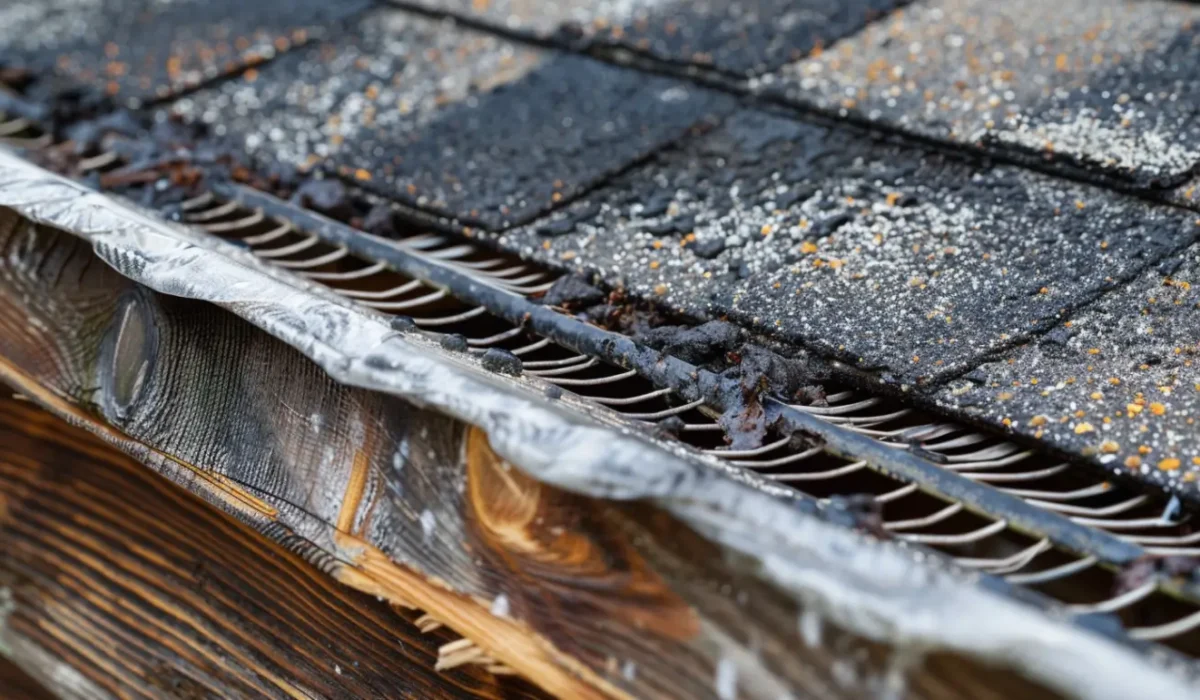There’s nothing more frustrating for a homeowner than a roof leak that comes and goes. One day your ceiling is perfectly dry; the next, you’re placing a bucket under a drip. These are called intermittent roof leaks—and they’re not only annoying, but often harder to diagnose and fix than consistent ones.
In Grapevine, TX, where intense sun, shifting humidity, and sudden storms are common, understanding the root causes of intermittent roof leaks is key to preventing further damage to your home. Let’s break down why they occur and what you can do about them.
Why Intermittent Leaks Are So Difficult to Detect
Unlike constant leaks that show obvious signs of damage, intermittent leaks only appear under certain conditions. That means your roof might look perfectly intact during an inspection—but fail when the right combination of rain, wind, and temperature hits.
This inconsistency can mislead even seasoned homeowners into thinking the problem has gone away, when in reality, it’s getting worse behind the scenes.
Common Causes of Intermittent Roof Leaks
1. Wind-Driven Rain
Grapevine’s storms don’t always fall straight down. Wind can blow rain sideways or upward, forcing moisture under shingles, through vents, or around flashing that would normally be sealed during calm conditions. This is why a leak may only appear during strong thunderstorms with high winds.
2. Improper Flashing Installation
Flashing protects vulnerable areas on your roof—around chimneys, skylights, valleys, and vents. If it’s installed incorrectly or has degraded over time, water can seep in intermittently when the angle of rainfall or the amount of water overwhelms the seal.
3. Clogged Gutters and Downspouts
When gutters are clogged with leaves or debris, water can back up under the edge of your roof, especially during heavy rains. This doesn’t happen with every storm—only when rainfall is intense enough to overflow the system, making the leak appear sporadically.
4. Cracked or Aging Sealants
Sealants around roof penetrations (pipes, vents, satellite mounts) naturally degrade over time due to UV exposure and temperature shifts. These cracks may expand only under certain moisture levels or temperatures, letting in water temporarily.
5. Roofing Material Expansion and Contraction
In hot climates like Grapevine, TX, roofing materials expand during the day and contract at night. Over time, this cycle causes stress fractures or loosens nail fasteners. Leaks may only occur when materials are in a specific state—such as after a long, sunny day followed by evening rain.
6. Condensation Issues
Sometimes what appears to be a roof leak is actually condensation buildup in the attic. Poor ventilation causes warm interior air to meet cold roof decking, resulting in water droplets. These may drip down during cooler or humid nights and mimic the symptoms of an external leak.
7. Ice Dams (Rare but Possible)
In colder months, intermittent leaks might be due to ice dams—where melting snow refreezes at the eaves, forcing water back up under shingles. While uncommon in Grapevine, sudden cold snaps can occasionally cause this issue on vulnerable roofs.
Why These Leaks Can’t Wait
Just because a leak is inconsistent doesn’t mean it’s harmless. Intermittent leaks:
- Allow moisture to accumulate over time
- Promote mold and mildew growth
- Weaken your attic insulation
- Damage drywall, framing, and even electrical systems
Since they’re often hidden or misdiagnosed, they can lead to extensive internal damage long before visible signs appear.
How to Track and Diagnose an Intermittent Leak
If you suspect your roof has an on-again, off-again leak:
- Keep a log of when the leak occurs—note the weather, wind direction, and time of day
- Check your attic after storms for dampness, water stains, or musty odors
- Inspect ceiling stains for signs of recent water intrusion or spread
- Look for drip patterns—water stains may appear on rafters or pipes but not on ceiling tiles
However, due to the complex nature of intermittent leaks, your best move is to call in a professional.
Call a Trusted Local Roofing Expert
Diagnosing the source of a sporadic leak requires deep roofing knowledge, specialized tools, and experience with regional weather behavior. In Grapevine, TX, homeowners turn to KangaRoof for advanced leak detection and long-lasting solutions. KangaRoof is an OC Preferred and Emerald Premium Contractor, known for their methodical inspections, expert repairs, and honest recommendations.
Their team uses moisture mapping tools and thermal imaging when necessary to trace even the most elusive leaks—and fix them properly the first time.
Preventive Steps to Avoid Intermittent Leaks
While not all leaks can be prevented, routine care reduces the risk significantly:
- Schedule annual roof inspections, especially after hail or windstorms
- Clean your gutters regularly to avoid overflow-related damage
- Trim overhanging branches to prevent debris buildup and roof abrasion
- Check attic ventilation to reduce condensation risks
- Monitor known problem areas like skylights, valleys, and dormers
Keeping your roof storm-ready year-round is the most effective way to prevent leaks—whether constant or intermittent.
Final Thoughts: Small Leaks, Big Problems
Intermittent roof leaks may seem minor or manageable, but they’re often signs of a more serious issue that could escalate quickly. Don’t let the unpredictability fool you—moisture is the enemy of your home’s structural integrity.
When in doubt, get your roof inspected by trusted experts. In Grapevine, TX, KangaRoof is ready to help you find, fix, and prevent leaks—so you can enjoy a dry, protected home no matter what the Texas skies bring.
Read also our blog: Fall Roofing Maintenance: Must-Do Tips for Homeowners
